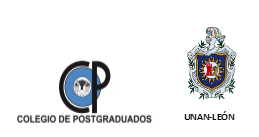Efecto del cambio climático en la distribución potencial de HLB en sudamérica
DOI:
https://doi.org/10.5377/ribcc.v2i4.5925Palabras clave:
HLB, Cambio climático, PCA, Riesgo fitosanitarioResumen
El Huanglongbing (HLB), es la enfermedad de los cítricos más destructiva a nivel mundial, que en Sudamérica presenta una distribución restringida a algunos estados de Brasil. El objetivo del trabajo fue estimar los efectos del cambio climático en la distribución geográfica potencial de HLB en Sudamérica, mediante una técnica basada en el Análisis de Componentes Principales, que predice la aptitud ambiental de una especie a partir de la distancia euclidiana desde cualquier punto geográfico de Sudamérica hacia los sitios dónde HLB se ha establecido en Sudamérica. Para estimar los cambios en la distribución potencial de HLB ante un escenario de cambio climático, se consideró la Vía de Concentración Representativa 2,6, propuesta por el Quinto Informe de Evaluación del Intergovernmental Panel on Climate Change, generada por el modelo HadGEM2-ES, para las décadas de 2050 y 2070. A posteriori, se calculó el estadístico kappa de las capas resultantes contra una matriz de sitios con presencia de HLB en Brasil. Se utilizaron los softwares QGIS 2.12, IDRISI Selva e Infostat. El modelo estimó que los sitios con un elevado riesgo de establecimiento se distribuirían en el sur de Brasil, sudeste de Paraguay, región Noreste y zona oriental de la región Noroeste de Argentina y el centro-sur de Bolivia. Según las estimaciones del IPCC5, los efectos del cambio climático determinarían que a futuro, las áreas de elevado riesgo climático para el establecimiento de HLB, se desplazarían hacia el sudoeste de las áreas consideradas de mayor riesgo climático en la actualidad.Descargas
1448
HTML 0
Publicado
Cómo citar
Licencia
Derechos de autor 2016 Rev. iberoam. bioecon. cambio clim.

Esta obra está bajo una licencia internacional Creative Commons Atribución-NoComercial-CompartirIgual 4.0.
Copyright © Rev. iberoam. bioecon. cambio clim. (Colegio Postgraduados y UNAN-León, Escuela de ciencias agrarias y veterinarias/ Departamento de Agroecología/Centro de Investigación en Bioeconomía y Cambio Climático (CIByCC).







